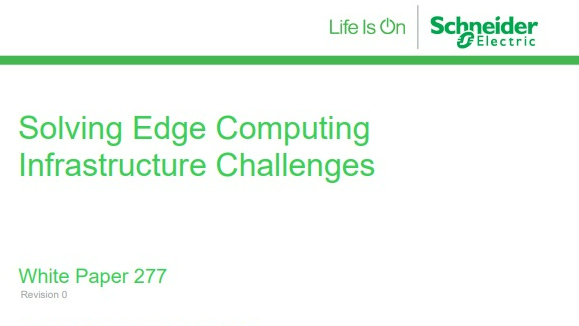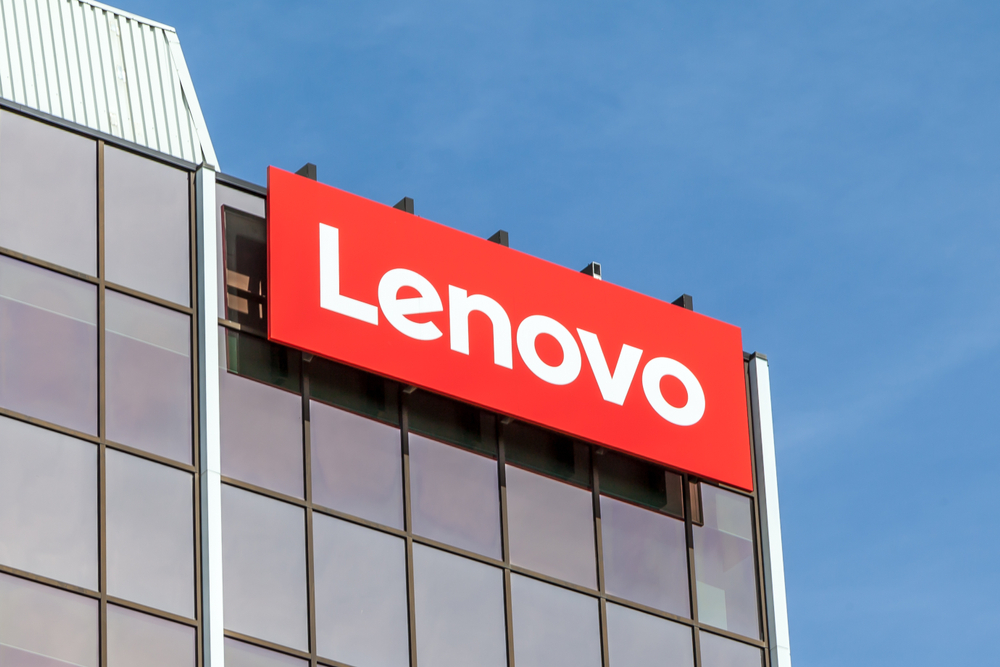Giving your business an edge
As 5G begins to take off, how can businesses prepare for their data and communications infrastructure moving to the edge of their networks?


A seismic shift is coming to how businesses use communications technologies. As the roll-out of 5G accelerates, the internet and the networks it supports will transform as centralised data moves to the edge of the network, creating flexible communications systems with low latency.
The burgeoning Internet of Things (IoT) space will also influence how data processing takes place on the edge of networks. Already, 'edge data centres' are being built, delivering efficient services to end-users who are distant from the centralised data centres. Data processing on the edge of networks will expand to support developing sectors such as autonomous vehicles, for example, that need low-latency communications to ensure they function safely.
Data networks in their current form are highly hierarchical. The expansion of 5G not only delivers new hardware infrastructure, but also a shift to large-scale network function virtualisation (NFV). This is coupled with software defined networks (SDN) that can be used with ‘network slicing’, enabling businesses to divide the 5G network in specialised channels for specific use cases.
Communications services industry body TM Forum explains: “Architecturally, the evolution to 5G may not be as dramatic as some of the other transformations, but when it comes to opportunity, 5G promises to be revolutionary if communications service providers, suppliers, application developers and enterprises can figure out how to co-create, manage and participate in digital ecosystems.”
Speaking to IT Pro, Martin Garner, chief operations officer at CCS Insight, says: “The key benefit of 5G is speed and latency. By doing the initial processing of a lot of the data at the edge, decision making can be done more quickly, and at a lower cost. For example, in a processing plant, there are huge benefits from automatically detecting anomalies in real-time."
He continues: “An additional benefit comes from the option to process relevant data locally and never allow it to leave the premises. This is true for many healthcare uses, where the information is extremely sensitive for personal reasons, and also for businesses that, for example, do not want to let commercially sensitive production data leave the factory. Some industrial sites even have an ‘air gap’, with no external data connection to the machinery, to ensure that local data stays local."
Edge networks will become the fundamental foundation onto which all intensive data processing services will be built.
Get the ITPro daily newsletter
Sign up today and you will receive a free copy of our Future Focus 2025 report - the leading guidance on AI, cybersecurity and other IT challenges as per 700+ senior executives
Computing on the edge
While edge computing offers innumerable benefits, it needs a solid mobile communications infrastructure to support it.
“A fundamental goal of 5G is to enable virtual network slicing, as fully scalable, programmable and flexible networks are the future with 5G,” says Colin Bryce, Director of Mobile Network Engineering at CommScope.
“Dividing the infrastructure into independent virtual networks enables operators to create an independent standardised layer above the control plane, from which they can deliver proprietary value-added services. Network slicing will be especially important for 5G network success, as mobile network operators seek to find effective solutions to manage spectrum while reducing costs. Virtual networks will allow for tremendous network efficiencies and provide operators.”
In its 2017 “Introduction to Network Slicing”, the GSMA said that slicing could be determined by function or behaviour. For example, in automotive one slice could be dedicated to a high bandwidth connection for delivering infotainment, while another “ultra-reliable” slice would be used for assisted driving
John Vickery, principal technology partner at BT, who explains that the edge could also be closer to home.
“In an enterprise context where business customers have large quantities of data to process such as HD video, video analytics or machine vision, these requirements can be met by deploying an 'on-premise' edge capability at their business location,” he tells IT Pro.
“This allows them to benefit from reduced backhaul costs (since they won’t need to send all their data to the core) and they also get the added benefits of low latency, reliability and data sovereignty. So, any investment in a network edge capability will also need to be balanced against growth in demand for 'on-premises' edge.”
How businesses slice up the available 5G network to fuel their needs and how edge computing will factor into their infrastructures remains to be seen. What is clear for all enterprises is the edge offer massive potential to finally use data processing and communications to deliver world-class services.
New data ecosystems
While edge computing using 5G may be something of an emerging technology trend, there are already a number of practical applications and use cases to consider.
In a recent research paper, Julian Bright, senior analyst at Ovum, said: “The incentive for edge computing to be deployed in 5G networks appears to be growing, and it is becoming increasingly important to the 5G business case. The first commercial deployments appear likely to start in 2020 in markets such as South Korea and China with others following soon after. Above all, MEC [Multi-access edge computing] can become a reality, particularly as more commercial 5G deployments begin to appear, services start to bed in, and yet more use cases start to emerge.”
As the infrastructure begins to develop as 5G rolls out, all eyes will turn to the costs of deployment and ongoing development. It’s clear that there is a data and communications imperative no business can ignore.
In 2019, Barclays Bank conducted a study looking at the benefits and impacts 5G could have on businesses. It found that currently 59% of companies operate across disparate locations and need to communicate in real-time, 49% need to communicate with customers and fill customer orders online, 48% have to connect multiple machines together to run their business, and 43% say that customers expect it.
The report’s authors said that in light of these findings, “it’s obvious that 5G’s projected increase in speed and reliability will greatly benefit british firms. However, factor in the forecasts for future demand for mobile internet, particularly in the context of IoT and issues such as connecting multiple devices and customer expectations leap to the fore”.
This multi-channel approach is how 5G and edge computing services will be built. Once the new communications ecosystem begins to come into focus, more use cases will develop. It’s a heady time, as businesses can see the first signs of the shackles coming off their communications services. The edge could finally deliver the quantum leap in network design and management they have been waiting for.
David Howell is a freelance writer, journalist, broadcaster and content creator helping enterprises communicate.
Focussing on business and technology, he has a particular interest in how enterprises are using technology to connect with their customers using AI, VR and mobile innovation.
His work over the past 30 years has appeared in the national press and a diverse range of business and technology publications. You can follow David on LinkedIn.
-
 Why AI researchers are turning to nature for inspiration
Why AI researchers are turning to nature for inspirationIn-depth From ant colonies to neural networks, researchers are looking to nature to build more efficient, adaptable, and resilient systems
By David Howell
-
 Colt Technology sells eight European data centers
Colt Technology sells eight European data centersNews NorthC says the acquisition will help it improve coverage in Germany and other markets
By Emma Woollacott
-
 Quantitative analysis of a prefabricated vs. traditional data center
Quantitative analysis of a prefabricated vs. traditional data centerWhitepaper Apples to apples cost analysis between data centre types
By ITPro
-
 Battery technology for single phase UPS systems: VRLA vs. Li-ion
Battery technology for single phase UPS systems: VRLA vs. Li-ionWhitepaper An overview of li-ion batteries in comparison to VRLA batteries for singlephase UPS applications
By ITPro
-
 World-record power-performance for virtualization workloads
World-record power-performance for virtualization workloadswhitepaper This study finds Dell servers offer efficient power-performance advantages for businesses that rely on virtualized infrastructure
By ITPro
-
 Solving edge computing infrastructure challenges
Solving edge computing infrastructure challengesWhitepaper Introducing an integrated micro data center solution to help mitigate unique challenges of edge applications
By ITPro
-
 Edge to cloud security: A new WAN and security edge
Edge to cloud security: A new WAN and security edgeWhitepaper A practical guide to adopting a secure access service edge (SASE) architecture
By ITPro
-
 Myriota taps Spire Global for global satellite expansion
Myriota taps Spire Global for global satellite expansionNews The partnership will help Myriota expand its IoT offering while reducing latency
By Praharsha Anand
-
 JFrog acquires Upswift for edge-based DevOps expansion
JFrog acquires Upswift for edge-based DevOps expansionNews Upswift's tool will extend JFrog's DevOps pipeline to IoT devices
By Danny Bradbury
-
 Lenovo and VMware collaborate on resilient edge computing
Lenovo and VMware collaborate on resilient edge computingNews Lenovo ThinkSystem SE350 Edge Servers will ship with pre-installed VMware edge software
By Praharsha Anand